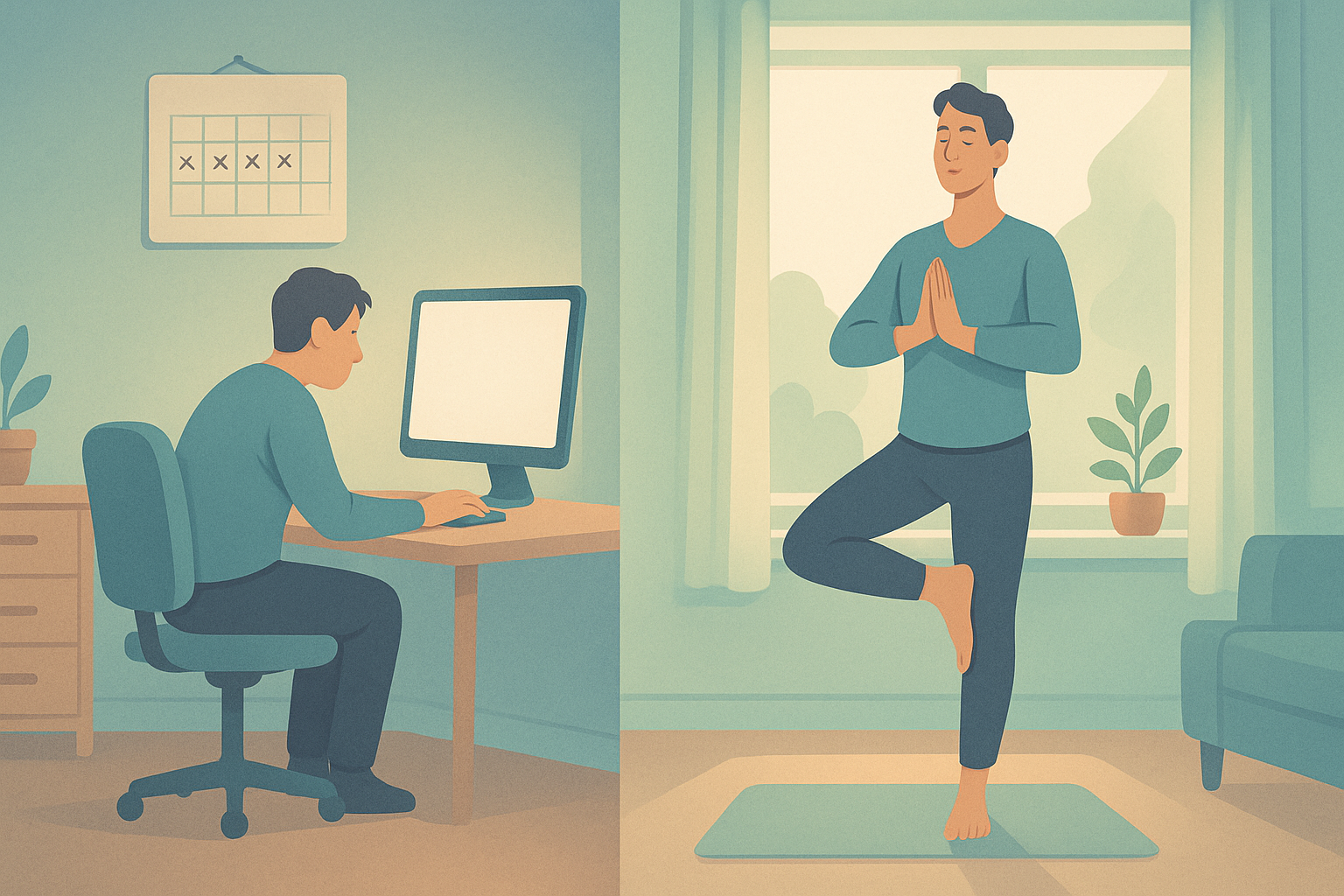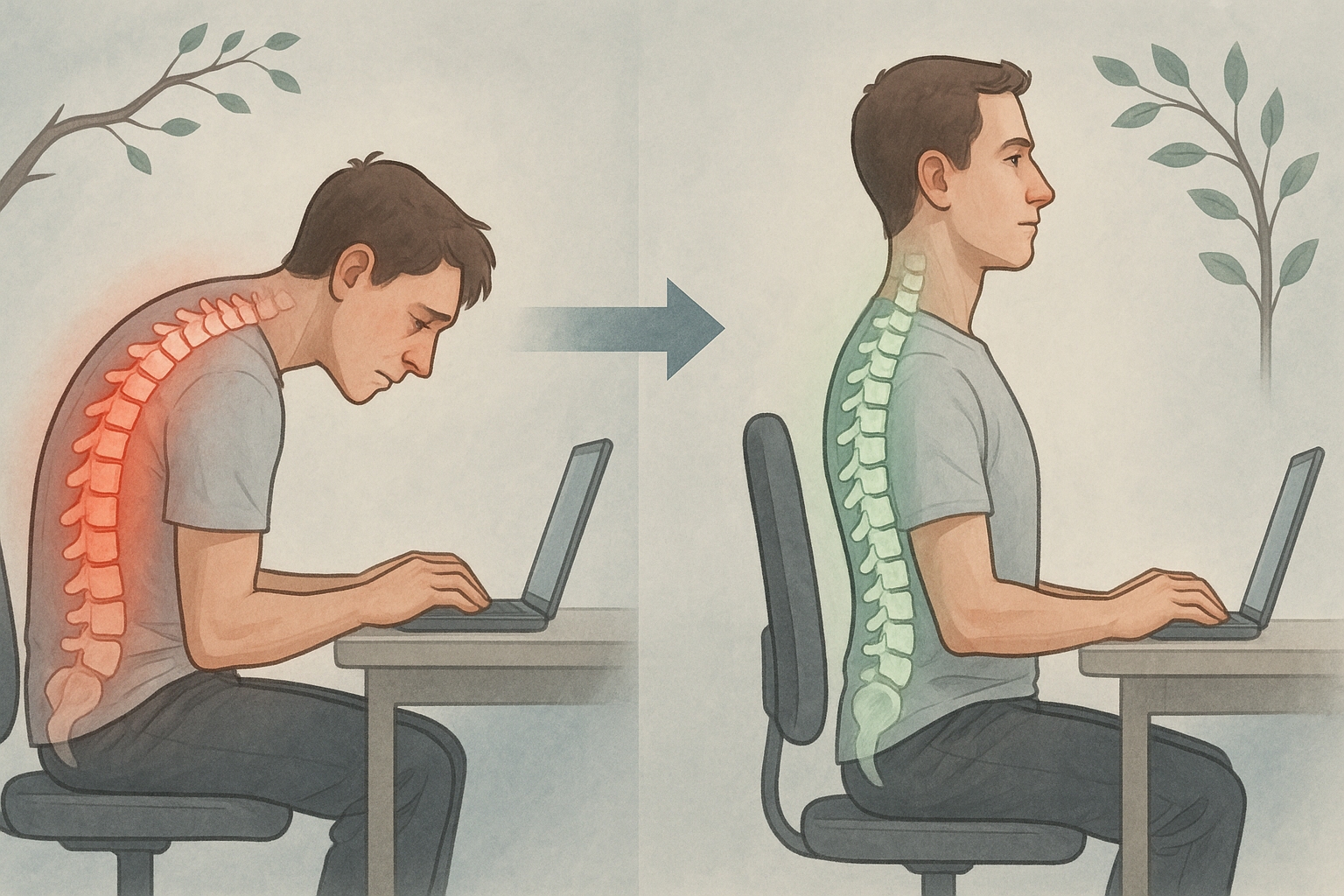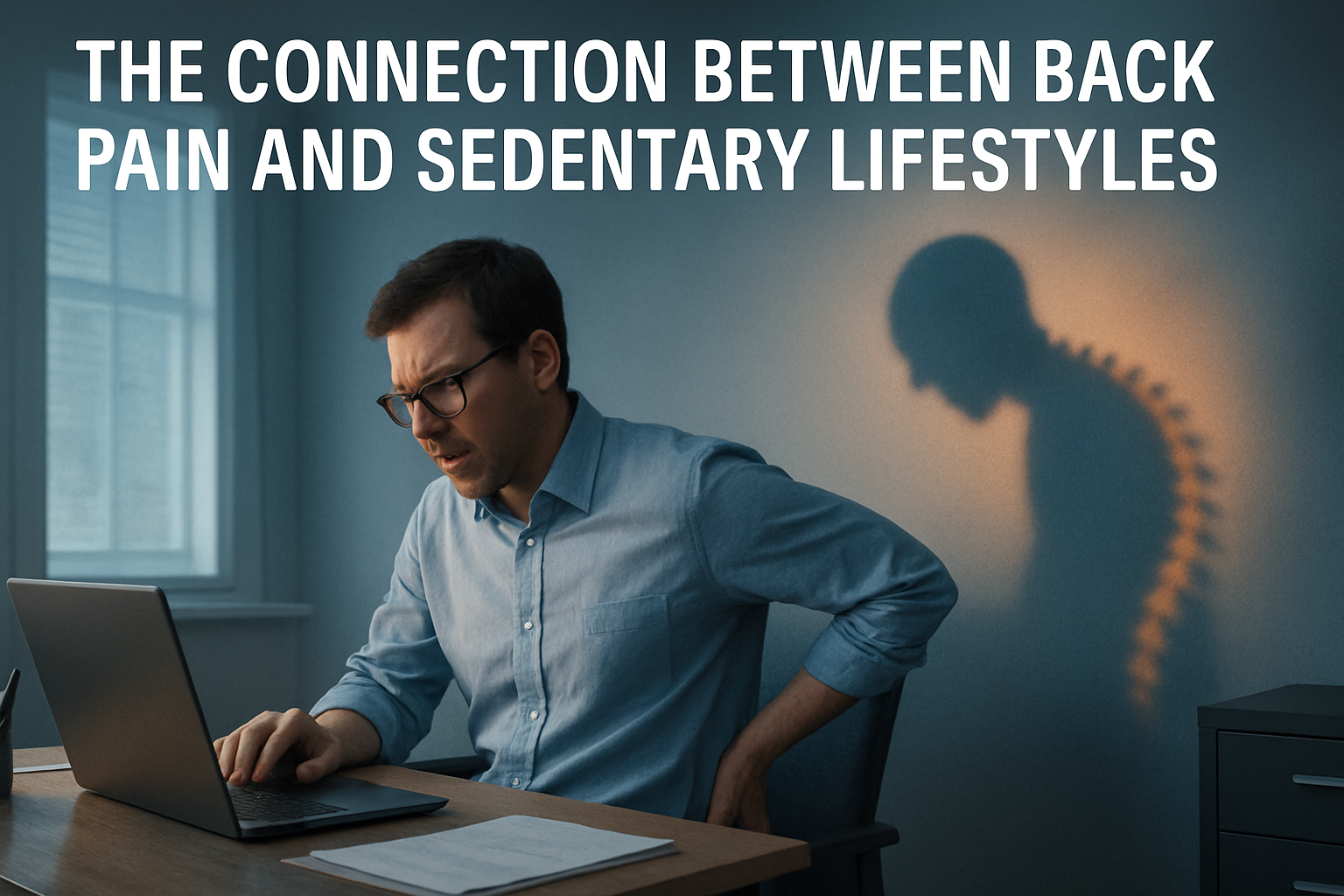The Connection Between Back Pain and Sedentary Lifestyles
In today’s fast-paced world, many of us find ourselves glued to our desks, often overlooking the silent repercussions of a sedentary lifestyle. One of the most prevalent consequences is back pain. This blog post dives into how sitting for extended periods can lead to discomfort and what you can do to combat it. Let’s unravel this connection and explore effective solutions together! 🚶♂️
Table of Contents
1. Introduction
2. Understanding Sedentary Lifestyles
3. How Sedentary Habits Cause Back Pain
4. The Role of Poor Posture
5. Tips to Alleviate Back Pain
6. The Importance of Regular Movement
7. Conclusion
8. FAQs

Introduction
Back pain is a common ailment affecting millions worldwide, and its link to sedentary lifestyles is undeniable. Whether it’s due to long hours at the office or lounging at home, the lack of movement can wreak havoc on our spines. But fear not, understanding the root causes can lead to effective prevention and relief. Let’s delve into the intricacies of this modern-day problem.
Understanding Sedentary Lifestyles
Sedentary lifestyles are characterized by prolonged periods of inactivity. Many individuals spend a significant portion of their day seated, whether at work, during commutes, or at home. This lack of movement can lead to various health issues, and back pain tops the list.

How Sedentary Habits Cause Back Pain
When we sit for too long, especially in poor postures, our muscles and ligaments can become strained. Here’s how it happens:
1. Muscle Imbalance: Sitting causes certain muscles to weaken while others become overactive, leading to imbalances. Over time, this can result in discomfort and pain.
2. Decreased Blood Flow: Prolonged sitting reduces circulation, leading to stiff muscles and joints, which can exacerbate back pain.
3. Compression of Spinal Discs: Sitting for extended periods can compress the discs in your spine, leading to issues like herniated discs or sciatica.
The Role of Poor Posture
Poor posture can significantly contribute to back pain. Slouching or sitting with a curved spine can place extra pressure on the lower back. Over time, this can lead to chronic pain and discomfort. To mitigate this, it’s crucial to be mindful of your posture and make necessary adjustments.
Tips to Alleviate Back Pain
Thankfully, there are strategies you can implement to reduce back pain linked to sedentary habits:
1. Ergonomic Workstations: Invest in an ergonomic chair and desk setup to support good posture and reduce strain.
2. Regular Breaks: Stand up and stretch every 30 minutes. Even a short walk can make a significant difference.
3. Exercise Regularly: Incorporate exercises that strengthen the core and back muscles. Yoga and Pilates are excellent choices.
4. Stay Hydrated: Drinking enough water helps maintain the elasticity of spinal discs and overall health.
The Importance of Regular Movement
Incorporating movement into your daily routine is crucial to combat a sedentary lifestyle. Here are some ways to stay active:
1. Walking Meetings: Instead of sitting in a conference room, suggest a walking meeting.
2. Stand-Up Desks: Consider using a stand-up desk to alternate between sitting and standing throughout the day.
3. Active Breaks: Use lunchtime to perform activities like brisk walking, stretching, or light workouts.
Conclusion
While our modern lifestyles often demand long hours in front of screens, it’s essential to be proactive about our health. Understanding the connection between sedentary habits and back pain is the first step towards making positive changes. By incorporating regular movement, maintaining good posture, and being mindful of our bodies, we can significantly reduce discomfort and enhance our quality of life. 🌟
FAQs
Q: Can back pain caused by a sedentary lifestyle be reversed?
A: Yes, with consistent effort towards improving posture, regular exercise, and ergonomic adjustments, many people find relief from back pain.
Q: How often should I take breaks if I sit all day?
A: Aim to take a break every 30 minutes to stretch or walk around for a few minutes to keep your body active.
Q: Are there specific exercises to prevent back pain?
A: Yes, exercises that strengthen the core, back, and improve flexibility can help prevent back pain. Consider activities like yoga, Pilates, and swimming.
Q: Is standing all day better than sitting?
A: While standing is better than sitting for prolonged periods, it’s important to balance both. Alternate between sitting and standing to avoid fatigue and maintain comfort.
By understanding the impact of our daily habits on our bodies and making small, consistent changes, we can pave the way for a healthier, pain-free lifestyle. 🏃♀️
